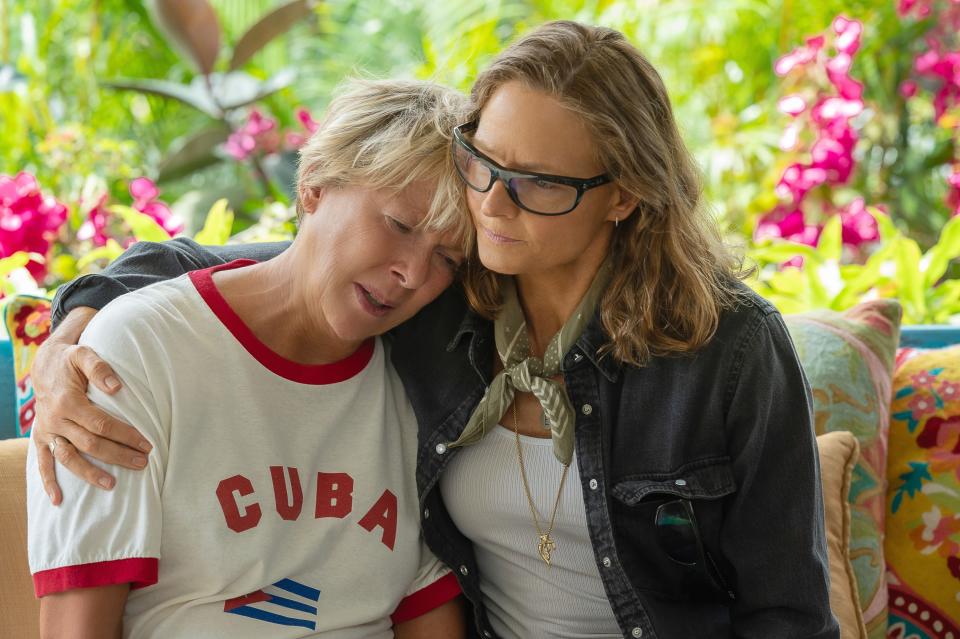Less Than Half of the Female Speaking Roles in 2023’s Top Grossing Films Went to Women Over 40

Women in film in 2023 were getting younger. When it came to all female characters that had speaking roles in last year’s top grossing movies, fewer than half were from women over the age of 40.
The latest report from Dr. Martha Lauzen’s famous Celluloid Ceiling study — this year called “It’s a Man’s (Celluloid) World” — found that on the whole, female characters were significantly younger than their male counterparts.
More from IndieWire
'Dune: Part Two' Brings Box Office Joy, but Don't Call It a Savior
Paramount Lost $490 Million from Streaming in Final 2023 Quarter
According to the study, which looks at the top 100 grossing movies released at the domestic box office in the year, 33 percent of female characters were in their 30s, but that number dropped precipitously to 15 percent for those in their 40s. Only 7 percent of female characters were over 60. For men, that decline didn’t happen until they got to age 50. The percentage of male characters in their 30s was the same as male characters in their 40s, at 28 percent, but 15 percent for those in their 50s. And there were more male characters over 60 than there were female characters over 60.
“The population of female characters contracts significantly at about the age of 40,” Lauzen said in a statement. “Moreover, while we can celebrate the performances of Jane Fonda, Diane Keaton, Rita Moreno, and a handful of other actresses over 60 last year, this age cohort comprised only 7 percent of all females in the top grossing films of 2023, well below their representation in the U.S. population. Limiting the age of female characters also limits their ability to age into positions of personal, political, and professional power.”
The age breakdown was just as striking if you look at speaking roles or major characters, as half of major female characters on screen were in their 20s or 30s, while half of major male characters on screen were in their 30s or 40s, and an even larger percentage of that group were in their 40s than 30s. Any transgender characters were all under 20 years old.
The percentage of female characters in their 40s was actually slightly higher this year than last year, but opportunities for women of a certain age have been stagnant for almost a decade. In 2015 and 2016, 20 percent of female characters were over 40, and that percentage only ticked to 18 percent once in 2021 since then.

Among this year’s Oscar nominees for Best Actress and Best Supporting Actress, two of the Actress nominees, Annette Bening and Sandra Huller, are over 40, and two of the Supporting Actress nominees, Jodie Foster and Emily Blunt, are over 40. But Bening and Foster’s film “Nyad” was released through Netflix on streaming and was not analyzed, and “Anatomy of a Fall” fell short of the Top 100 grossing movies. All the other nominees were in their 30s.
Despite the success of “Barbie” and other female-fronted films, Lauzen’s study found that 2023 was a down year for female representation on the whole. Only 18 percent of the top 100 grossing films had more female characters than male ones, 5 percent were equal, and 77 percent were lopsided to men, and only 28 percent of movies had female protagonists. Overall speaking parts for women dipped in 2023 compared to 2022, and representation for Black women and Latino women was down compared to 2022, though the percentage was up for Asian women.
“Because ‘Barbie’ claimed so much of our cultural space in 2023, female characters may have seemed more abundant in films last year,” Lauzen said. “But the overall percentage of female characters in speaking roles contracted, as did the percentage of female protagonists.”
Lauzen’s study comes on the heels of the sister representation study from Dr. Stacy Smith at USC, which this year found that female filmmakers are still rarely hired by major studios. Lauzen’s new report found that movies directed or written by at least one woman were more likely to feature a female protagonist or a higher percentage of female speaking parts than those without a woman director or writer.
Lauzen has conducted the report since 2002, analyzing over 29,000 characters and 1,300 films in that time. This year’s content analysis tracked 2,200 characters between the 100 highest grossing movies.
Best of IndieWire
The Best LGBTQ Movies and TV Shows Streaming on Netflix Right Now
Guillermo del Toro's Favorite Movies: 54 Films the Director Wants You to See
Nicolas Winding Refn's Favorite Films: 37 Movies the Director Wants You to See
Sign up for Indiewire's Newsletter. For the latest news, follow us on Facebook, Twitter, and Instagram.

